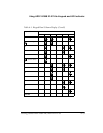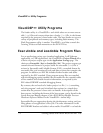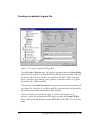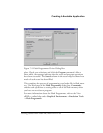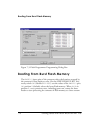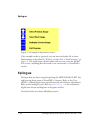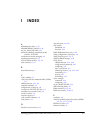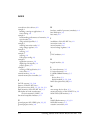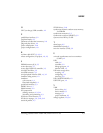
INDEX
I-2 Getting Started with ADSP-BF548 EZ-KIT Lite
event-driven device drivers, 6-2
example 1
building, running an application, 1-6
source listing, 1-9
example 2
benchmarking performance of memories, 2-4
typical results, 2-6
using statistical profiler, 2-5
example 3
enabling instruction cache, 2-7
using voltage regulator, 2-8
example 4
running, 3-17
example 5
running, 4-6
USB project config, 4-3
example 6
application structure, 5-9
displaying a bitmap file, 5-4
project options, 5-4
example 7
creating a VDK application, 6-4
source files, 6-7
external memory, 2-2, 2-6
external memory bus controller, 3-6
F
FAT file systems, 5-2, 5-10
features, of this EZ-KIT Lite,
x
file system services (FSS), 5-1, 5-2, 5-4, 5-9
flash memories, of this EZ-KIT Lite, 2-3
full-duplex universal asynchronous
receiver/transmitter (UART), 3-2
functional compiled simulators, 1-4
G
general-purpose I/O (GPIO) pins, 3-3, 3-5
general-purpose timers, 3-6
H
hardware model of processor (emulator), 1-4
host DMA port, 3-3
host mode, 4-2
I
installation, of this EZ-KIT Lite, 1-2
instruction cache, 2-8
internal memory, 2-6
internal voltage regulator, 2-8
J
JTAG emulators, 1-4
K
keypad interface, 3-3
L
L1 internal memory, 2-2
L2 internal memory, 2-2
L3 DDR SDRAM memory, 5-5
LCD
device driver, 5-3
display/module,
xi, 5-3, 5-10
linker description files (.ldf), 2-6
M
mass storage device driver, 4-3
memory hierarchy, of this EZ-KIT Lite, 2-2
MON LED (USB monitor), 1-2
N
NAND flash memory, x, 2-3, 5-2
NOR flash memory, 2-3
notation conventions,
xxiii



